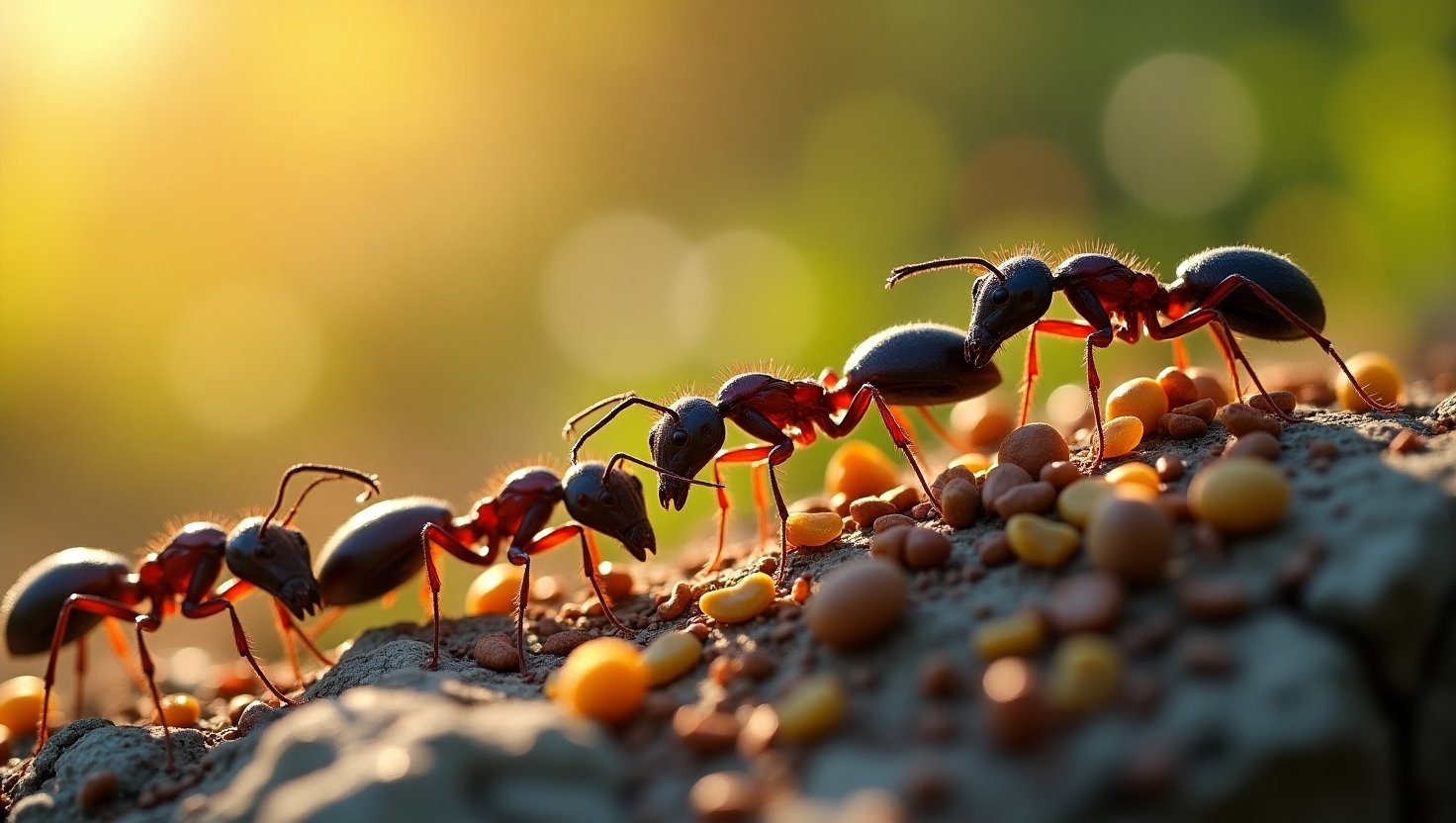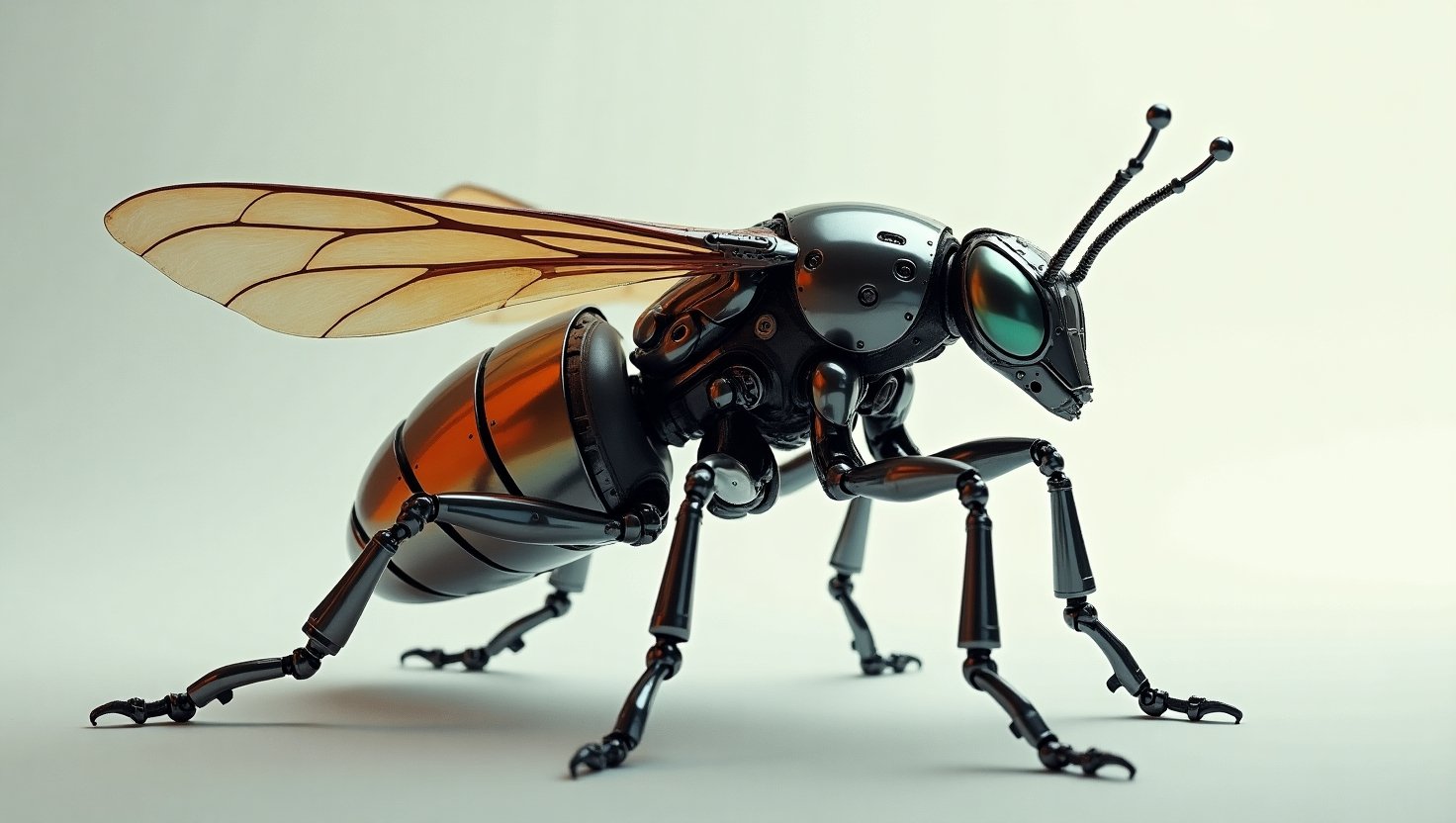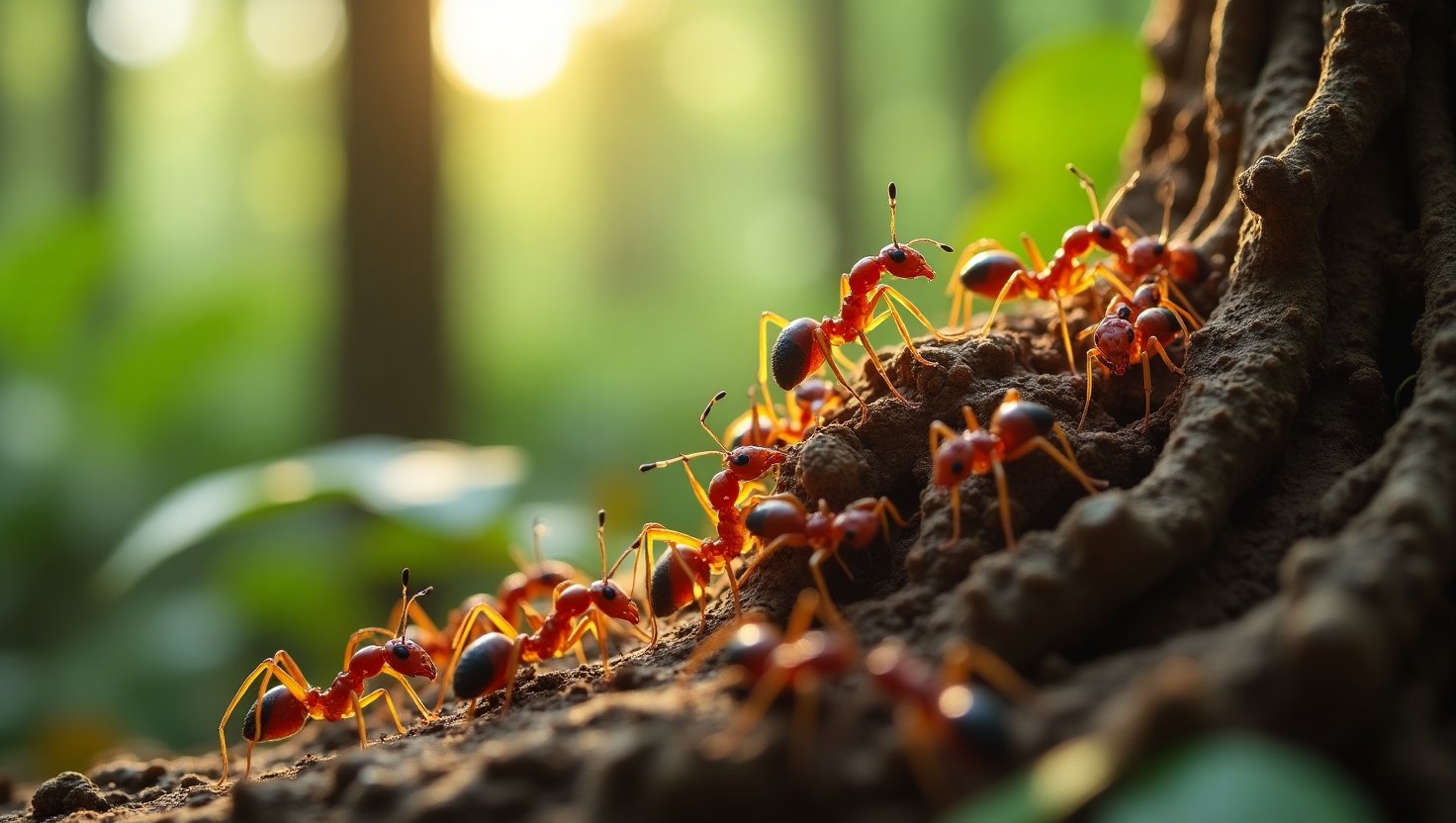Imagine a world where tiny, industrious ants are not just busy gathering food or building nests, but also inspiring cutting-edge algorithms that solve complex problems in our technology-driven society. Welcome to the realm of Ant Colony Optimization (ACO), a fascinating algorithm derived from the natural behavior of ants, designed to mimic their efficiency in finding paths and resources. Since its inception in 1992 by Marco Dorigo, ACO has become a cornerstone in the field of swarm intelligence, attracting attention across various industries including routing, scheduling, and even robotics.
As we delve into the ant-inspired algorithmic world, you’ll discover how these little critters, whose strength-to-weight ratio can astoundingly reach 3500 to 5000 times their body weight, have influenced human innovation. We’ll explore not only the brilliance of ACO but also the broader implications of swarm intelligence, mechanical biomimicry, and how something as humble as insect behavior is shaping the future of artificial intelligence.
So, grab your magnifying glass, and prepare to embark on an informative yet slightly humorous journey through the fascinating intersection of biology and technology, where ants are not just pests but pioneers.


Ant Colony Optimization (ACO)
Ant Colony Optimization (ACO) is a groundbreaking algorithm that was conceived by Marco Dorigo in 1992. Inspired by the foraging behavior of real ants, ACO operates on the principle of finding optimal paths through the use of pheromones, which are chemical signals utilized by ants to communicate and mark their trails. The algorithm ingeniously mimics this natural process to solve complex optimization problems, marking a significant contribution to the field of swarm intelligence.
At its core, ACO works by simulating a colony of ants that traverse a graph representing potential solutions to a problem. Each ant starts from a source node and navigates to a destination node, laying down pheromone trails based on the quality of the solution found. The more successful a path is in reaching the destination, the stronger the pheromone signal becomes. This iterative process allows subsequent ants to favor paths with stronger pheromone concentrations, gradually reinforcing optimal solutions over time.
Applications of Ant Colony Optimization
Applications for Ant Colony Optimization are vast and invaluable across several domains. In routing, ACO has been effectively employed in the development of routing algorithms for dynamic networks, allowing for adaptive path-finding in telecommunications and transportation systems.
- In scheduling, ACO finds utility in complex task assignments, maximizing operational efficiency in manufacturing and project management.
- Furthermore, in resource assignment, the algorithm assists in optimizing allocation strategies, such as in load balancing for data centers or in logistics and supply chain management.
“The lowly ant 🐜, a symbol of industriousness, has proven to be more than a symbol. Industry has followed,” noted experts pondering the impact of ant-inspired strategies in technology.
The applicability of ACO is continually evolving, being tested against new challenges in various industries. From robotics to network design, the algorithm showcases not only the effectiveness of biological models in artificial intelligence but also their adaptability to a wide array of practical problems.
Conclusion
In conclusion, whether it’s optimizing routes through a network or enhancing the efficiency of resource allocation, Ant Colony Optimization stands as a testament to the power of nature’s algorithms. It reinforces the notion that when we observe and learn from the natural world, we unleash innovative solutions to modern problems.
Key Facts About Ants
- Ants have an incredible strength-to-weight ratio, capable of lifting 3500 to 5000 times their own body weight.
- Researchers at MIT successfully created a textured surface utilizing beetle moisture farming techniques, inspired by the natural behavior of insects.
- Ants are not just industrious workers; they are remarkable engineers and architects, capable of building complex structures such as nests and highways.
- The foraging behavior of ants provides insights into problem-solving and optimization, which has led to the development of algorithms such as Ant Colony Optimization (ACO).
- Ants can communicate and coordinate with each other using pheromones, which helps them efficiently navigate their environments and search for food.
- There are approximately 12,000 known species of ants, showcasing a wide variety of adaptations and behaviors across different environments.
- Ant societies are structured with complex hierarchies, including workers, soldiers, and queens, each playing a crucial role in the colony’s survival.
- Ants have been around for over 100 million years, indicating their long-standing success as a species in diverse ecosystems.
- Some species of ants engage in mutualistic relationships with other insects, such as protecting aphids in exchange for honeydew.
- Ants’ ability to work together in large groups provides invaluable lessons in teamwork and collaboration, applicable to various fields, including business and technology.
These fascinating traits and behaviors of ants not only highlight their importance in ecology but also their influence on technology and artificial intelligence through biomimicry.
| Industry | Specific Applications | Outcomes |
|---|---|---|
| Logistics | Route optimization for delivery networks | Reduced delivery times and fuel costs |
| Telecommunications | Dynamic routing in data networks | Improved bandwidth utilization and reduced latency |
| Robotics | Path planning for autonomous robots | Increased efficiency in navigation and task execution |
| Manufacturing | Job shop scheduling | Enhanced operational efficiency and reduced production time |
| Transportation | Traffic flow optimization | Minimized congestion and improved traffic management |
| Healthcare | Medical diagnosis and treatment scheduling | Improved patient outcomes and optimized resource allocation |
| Environmental Science | Waste collection route optimization | Reduced costs and enhanced service effectiveness |
| Education | Adaptive learning path creation | Personalized education experiences for students |
Swarm Intelligence and Its Principles
Swarm intelligence is a fascinating concept that unfolds from the collective behavior of decentralized, self-organized systems. This principle can be observed in various forms across nature, from the coordinated movement of flocks of birds to the intricate foraging patterns of ants. Unlike traditional systems that rely on central control, swarm intelligence embraces the idea that simpler agents can collectively achieve complex tasks and solve problems through localized interactions and shared information.
At its heart, swarm intelligence capitalizes on principles like cooperation, adaptability, and emergent behavior. For example, in nature, ants work together to find food sources or to construct nests, dynamically adapting their strategies based on the environmental variables and the actions of their peers. This collective intelligence serves as a profound source of inspiration for algorithms and applications across various fields, including artificial intelligence.
Relation to Ant Colony Optimization
Ant Colony Optimization (ACO) is one of the most notable algorithms inspired by swarm intelligence, specifically the foraging behavior of ants. By mimicking how ants deposit pheromones on paths to create a trail leading to food sources, ACO efficiently explores solutions to optimization problems. This adaptive learning from the collective efforts of virtual ants enables the algorithm to find solutions that might elude traditional optimization methods.
Successful Real-World Implementations
Numerous industries have harnessed the principles of swarm intelligence for improved performance and efficiency:
- Transportation: In logistics and transportation, swarm intelligence has been used to optimize delivery routes. ACO algorithms help companies analyze traffic patterns and optimize schedules, resulting in lower fuel consumption and improved delivery times.
- Healthcare: Swarm intelligence has also found application in healthcare, particularly in the scheduling of treatment for patients. By analyzing patient data and treatment efficacy, ACO can help optimize healthcare resources, leading to better patient outcomes and streamlined hospital operations.
- Robotics: Robotics has heavily utilized swarm intelligence through the development of autonomous drones and robotic systems. By mimicking swarm behavior, multiple drones can coordinate their movements, complete tasks such as search and rescue operations, or monitor environmental changes collectively and efficiently.
- Telecommunications: In the telecommunications industry, ACO has been applied to manage data packet routing across networks. This allows for optimal utilization of bandwidth and reduced latency, ensuring faster and more reliable communication.
These successful implementations illustrate the versatility and power of swarm intelligence principles, proving that when systems collaborate and adapt collectively, the outcomes can be significantly enhanced. In the dynamic world of technology and data, the lessons learned from nature’s swarm behavior continue to inspire innovative and effective solutions.
In conclusion, Ant Colony Optimization (ACO) and swarm intelligence are two remarkable concepts that illustrate the potential of nature-inspired algorithms in addressing complex technological challenges. ACO, derived from the collective foraging behavior of ants, enables efficient problem-solving in optimization tasks such as routing, scheduling, and resource management. Meanwhile, swarm intelligence as a broader principle showcases how decentralized systems—like ant colonies—exhibit collaborative problem-solving capabilities, resulting in innovative solutions across diverse fields, from robotics to environmental management.
The implications of learning from nature extend beyond theoretical exploration; they pave the way for future technological innovations that can substantially improve efficiency and effectiveness in various industries. The success stories in logistics, healthcare, and telecommunications provide proof that embracing these natural principles can lead to significant advancements.
As we move forward, it is crucial to continue exploring and implementing the lessons drawn from the natural world. We encourage you to delve deeper into the fascinating realms of Ant Colony Optimization and swarm intelligence. Whether through research, practical applications, or simply expanding your knowledge, your exploration can contribute to solving some of today’s most pressing challenges. Join the journey of innovation inspired by nature, and let’s work together to unlock even more possibilities!
Explore more about ACO and swarm intelligence, and consider how these concepts might influence your field. Who knows? The next big innovation could be just an observation away!
For those curious to learn more, check out the original article on ant-inspired algorithms and their real-world applications.
Adoption Statistics of Ant Colony Optimization (ACO) in Various Industries
Ant Colony Optimization (ACO) has become increasingly prevalent across various industries due to its effectiveness in solving complex optimization problems. Here are the key statistics and insights gathered from recent research:
- Market Share and Growth: In 2023, ACO captured a prominent 45.0% share of the swarm intelligence market, demonstrating its significance in solving optimization issues. This market is projected to expand to USD 306.1 million by 2030, growing at a CAGR of 38.4% from 2024 to 2030, according to a report by PR Newswire.
- Logistics: ACO algorithms have been implemented by logistics giants like DHL and UPS to enhance route optimization and fleet management. These models not only outperform traditional methods but also improve delivery efficiency in dynamic environments.
- Telecommunications: ACO is utilized for network optimization in telecommunications, addressing challenges in bandwidth allocation and load balancing. Its ability to adapt to complex systems enhances network performance, supporting a significant shift towards decentralized management strategies.
- Healthcare: In the healthcare sector, ACO is being applied to optimize patient scheduling and resource allocation. Studies indicated that ACO techniques can lead to reduced patient wait times and improved resource utilization, significantly enhancing service delivery in hospitals.
- Robotics: ACO has proven valuable in robotics for path planning and navigation. Using ACO, robots can efficiently determine optimal routes in complex environments, leading to advancements in autonomous delivery systems and search-and-rescue operations.
These statistics reflect the growing confidence in ACO as a robust solution for various industries, highlighting its adaptability and effectiveness in tackling real-world challenges.
Expert Insights on Ant-Inspired Algorithms
Expert perspectives illuminate the transformative potential of ant-inspired algorithms in various industries. Here are notable quotes that encapsulate their effectiveness:
-
“Ant algorithms are a powerful framework for not just solving logistical problems in routing and scheduling, but also for leveraging collective intelligence in complex system optimization.” – Hugo Z. S. Alves, ACO Researcher.
-
“The intricate dynamics of ant behavior showcase how decentralized systems can solve highly complex problems efficiently, a principle that extends to real-world applications in industries like telecommunications and healthcare.” – Dr. Francesca R. Meng, AI in Industry Expert.
These insights reinforce the relevance of ant-inspired algorithms in addressing contemporary challenges, showcasing their application across diverse fields such as logistics, telecommunications, and healthcare. The acknowledgment from leading researchers underscores the enduring influence of biological models on artificial intelligence and optimization strategies.

